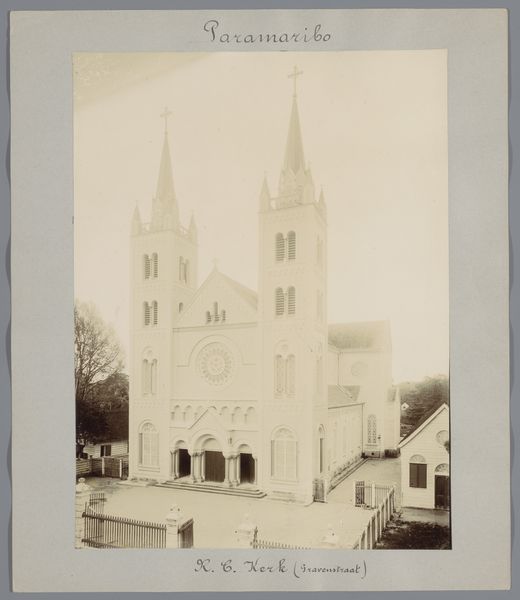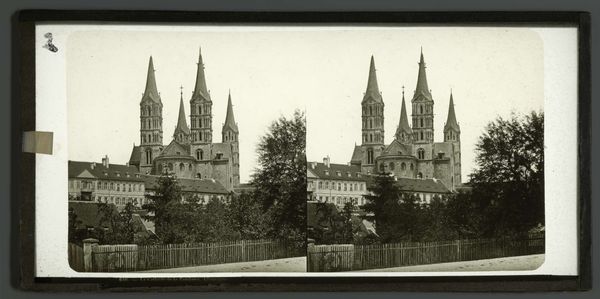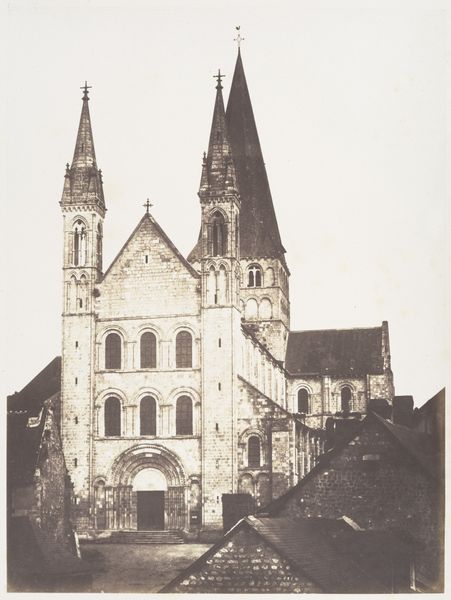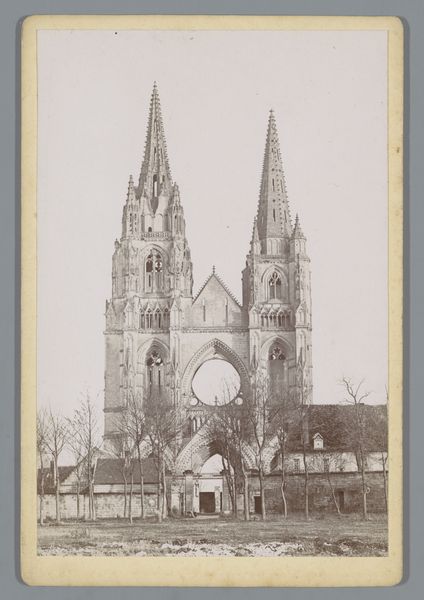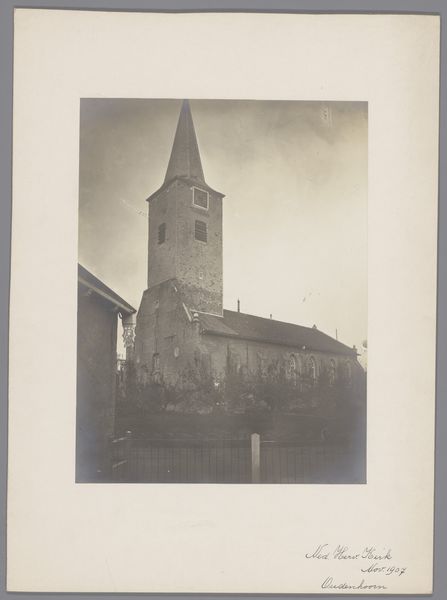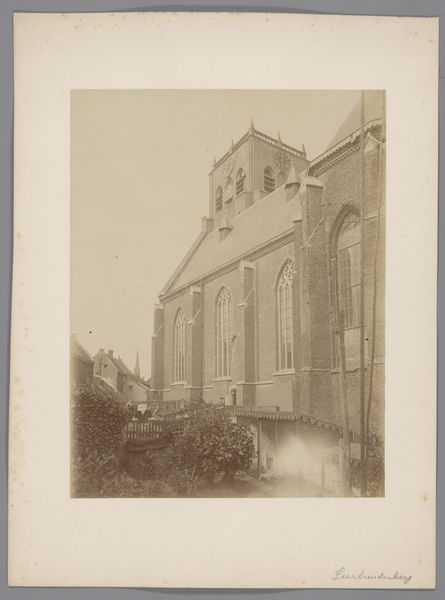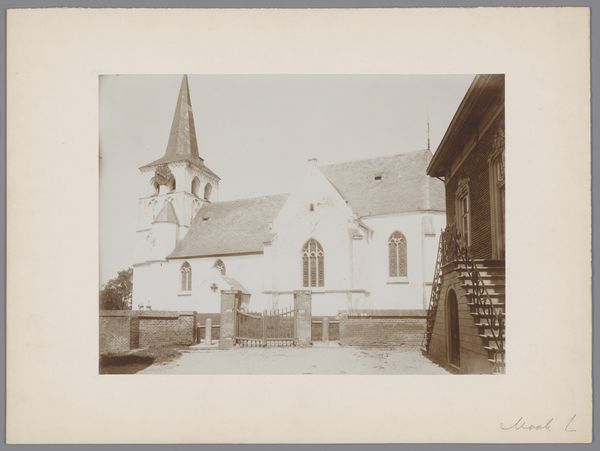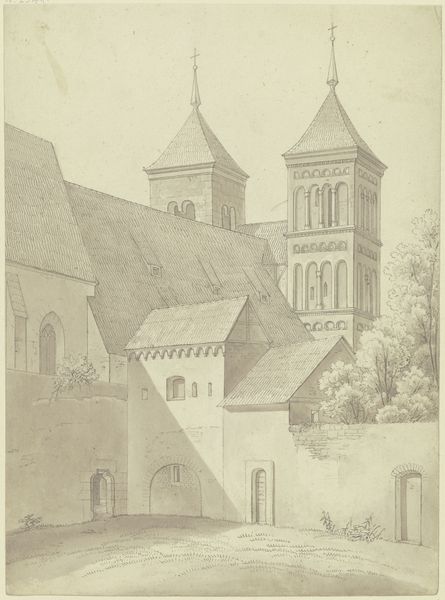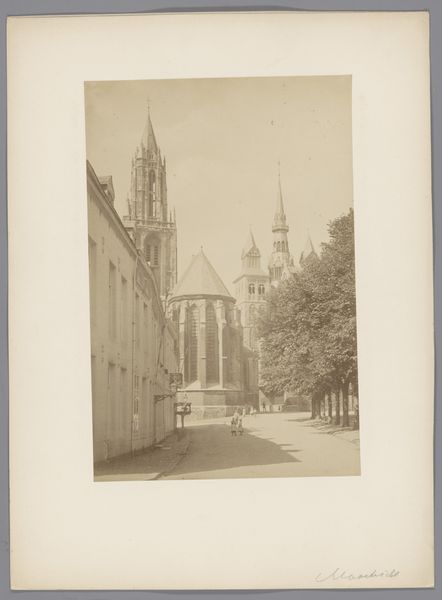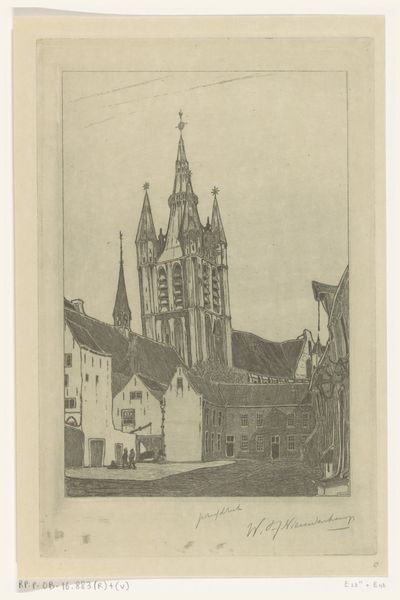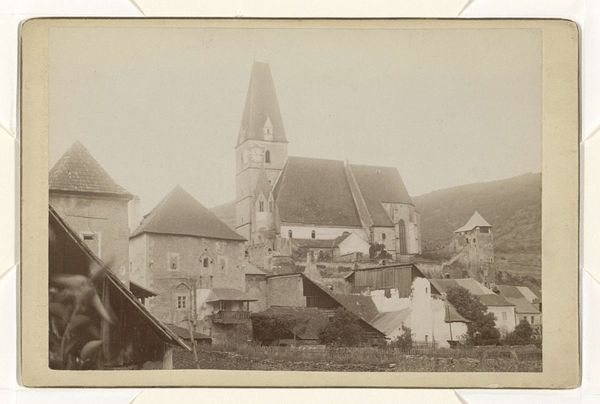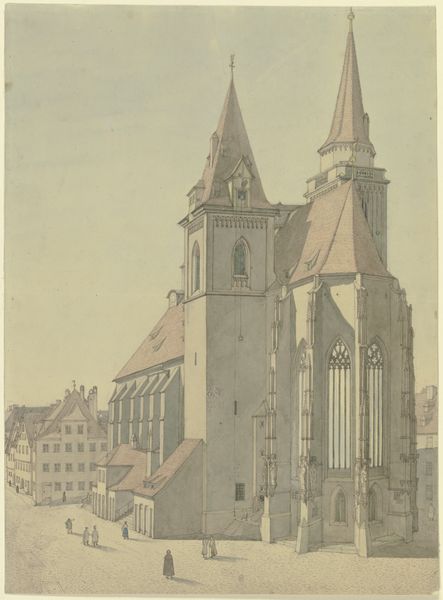
Dimensions: height 205 mm, width 255 mm, height 277 mm, width 367 mm
Copyright: Rijks Museum: Open Domain
Curator: Good morning. I’d like to direct our attention to this photoprint entitled "Exterieur van de Hofkirche St. Leodegar in Luzern", taken by Giorgio Sommer sometime between the 1880s and 1890s. The image showcases the exterior of the Hofkirche, presenting us with a glimpse into the architecture of Lucerne. Editor: Whoa, the way those towers just pierce the sky... It feels almost unsettlingly serene. You know, like a beautiful threat. And everything is so… perfectly centered. Curator: The composition is indeed striking, relying heavily on symmetry to convey a sense of order. The central axis, anchored by the church’s entrance, leads the eye directly upwards. The tonal range, while limited by the photographic technology of the time, still offers nuanced detailing in the stone textures. Editor: It makes me think about time, actually. The photograph has frozen this one fleeting moment, while the clock on the facade is still ticking onward. Does that make any sense? Plus the spires aim for the eternal. You almost feel the photographer reaching, searching for a truth through stillness. Curator: The stark contrast between the built structure and the softness of the surrounding foliage adds another layer to our interpretation. Consider how the neoclassical elements interact with the natural landscape. Semiotically, it could be argued this juxtaposition represents the taming of nature through culture, a recurring theme in 19th-century art. Editor: You know what else hits me? The lack of people. The frame has emptiness—it lends everything this haunting, timeless vibe. I bet if people were included, it would become a common image. This approach has mystery and grace. Curator: Precisely, the absence amplifies the monumentality of the structure. What Sommer achieved was so much more than architectural documentation, which could easily have been achieved with common materials and composition at the time. He used light and absence as an essential element of composition to provoke us and elicit such questions from our analysis. Editor: Thinking about this photo has my imagination on fire. There's something potent about seeing a sliver of another era trapped here forever. I might actually need to sit down for a moment... Curator: Yes, quite thought-provoking. The analysis encourages one to consider context, representation, and lasting cultural impact.
Comments
No comments
Be the first to comment and join the conversation on the ultimate creative platform.
